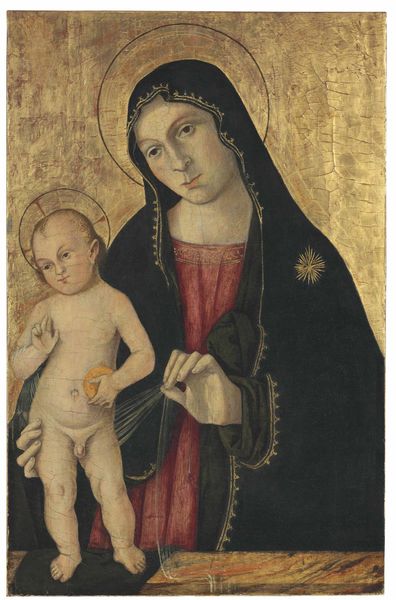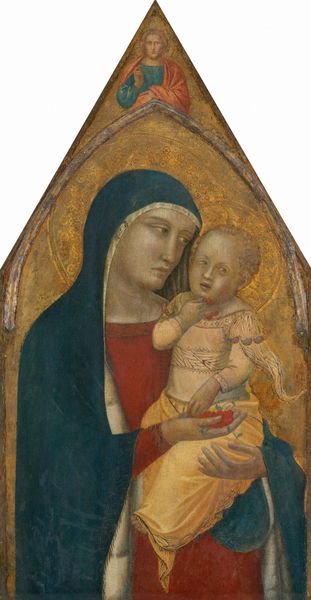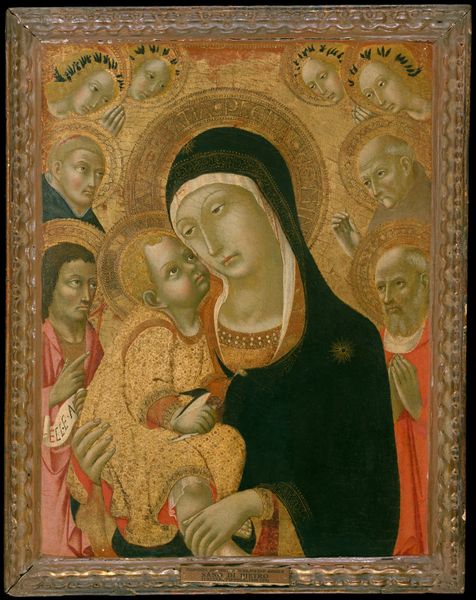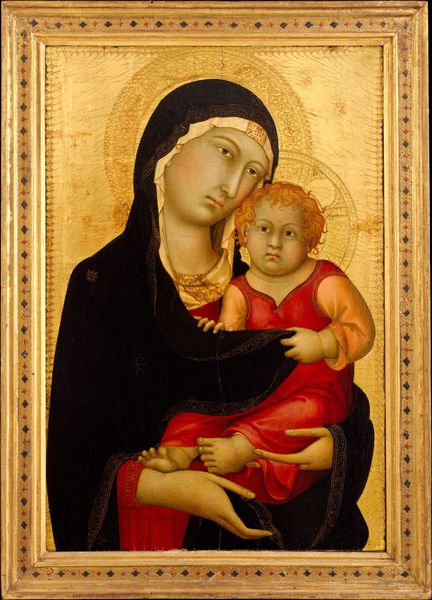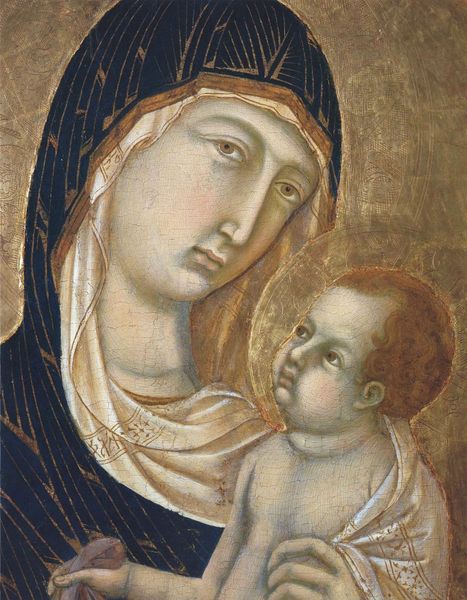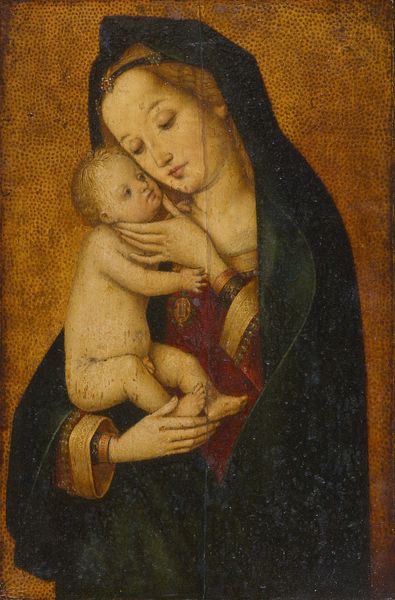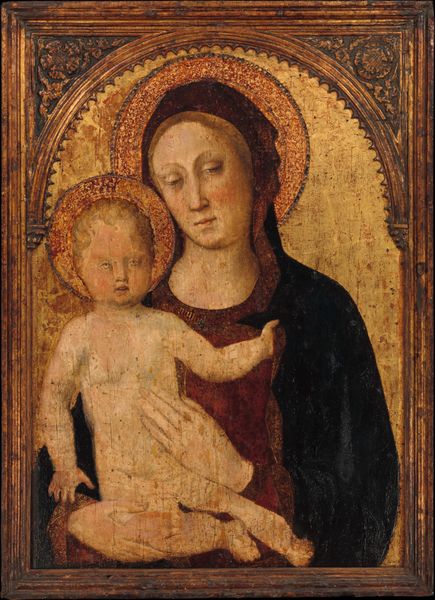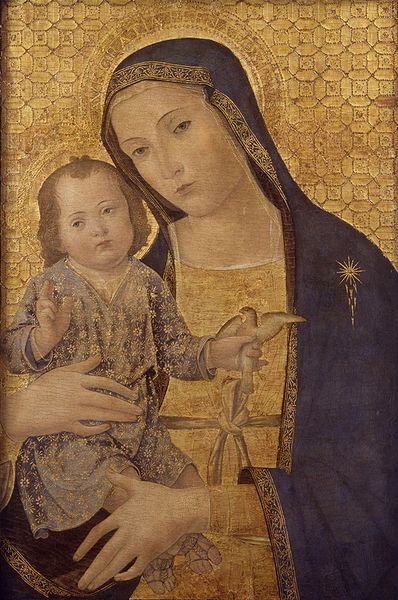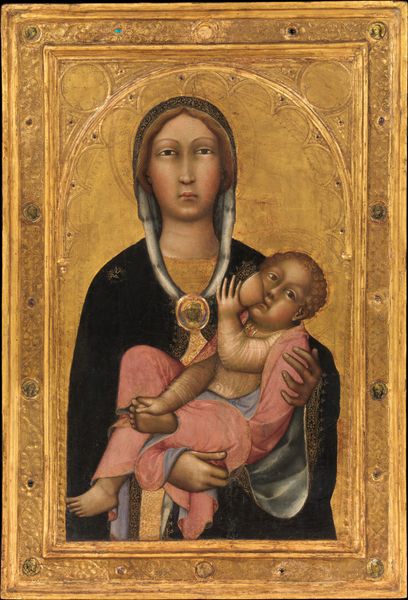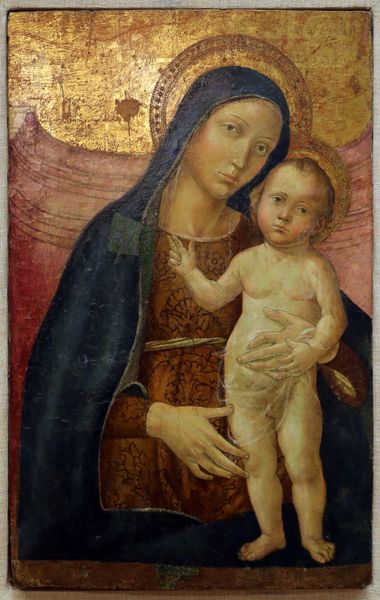
tempera, painting
#
portrait
#
tempera
#
painting
#
figuration
#
madonna
#
oil painting
#
child
#
history-painting
#
facial portrait
#
academic-art
#
italian-renaissance
#
portrait art
Dimensions: Overall, with engaged frame: 16 3/8 × 12 1/8 in. (41.6 × 30.8 cm) Painted surface: 13 1/8 × 9 in. (33.3 × 22.9 cm)
Copyright: Public Domain
Curator: What a tender scene! Looking at this “Madonna and Child,” made with tempera sometime between 1425 and 1475 by Sano di Pietro, my immediate feeling is a sense of serene sadness. It's like catching a glimpse of something holy that understands sorrow. Editor: It’s striking how formalized the gestures and expressions are. Madonna's gaze is averted, yet the lines of connection, the tender touch, speak of a deep bond. Look at how she holds him; it’s less an embrace and more like a presentation, as if she’s offering him up to the world. It makes you wonder about predestination and acceptance, doesn’t it? Curator: Yes, exactly. There's this profound stillness in her face, hinting at acceptance. She knows, somehow, and I think the use of gold reflects the divine tragedy and, perhaps, a sense of spiritual triumph despite sorrow. Do you notice the bird that the Christ Child is holding? Editor: Ah, the bird! That's a powerful symbol. Typically, the goldfinch in these images represents the Passion. The story goes that the goldfinch, with its red spot, acquired its color when it plucked a thorn from Christ's crown on the way to Calvary. The bird then, foretells of his sacrifice. Also notice how stiff the robes appear to be; that stylization echoes the somber narrative, the almost metallic appearance adding to a sense of unyielding fate. Curator: You've articulated it beautifully. The colors, while vibrant, carry a weight, a premonition that darkens the otherwise gilded world around them. The more I contemplate, the more the gold isn't about earthly riches; it’s something more spiritual, more eternal than flesh. It elevates the grief of the Madonna, transforming her from a mother to something iconic and representative of our potential to embrace that sorrow. Editor: Absolutely. This piece isn’t merely a depiction; it’s a constellation of signs pointing towards a complex theology rendered with grace and, yes, that subtle sorrow. That emotional tension—between love and acceptance of suffering—is what makes it so moving. Curator: So, while this artwork portrays Madonna and Child, it equally speaks about the bittersweet dance of destiny, devotion, and love—eternal themes for us all. Editor: I concur entirely; what lingers is not just an image of maternal affection but a timeless reflection on human endurance in the face of inevitable sorrow.
Comments
No comments
Be the first to comment and join the conversation on the ultimate creative platform.

